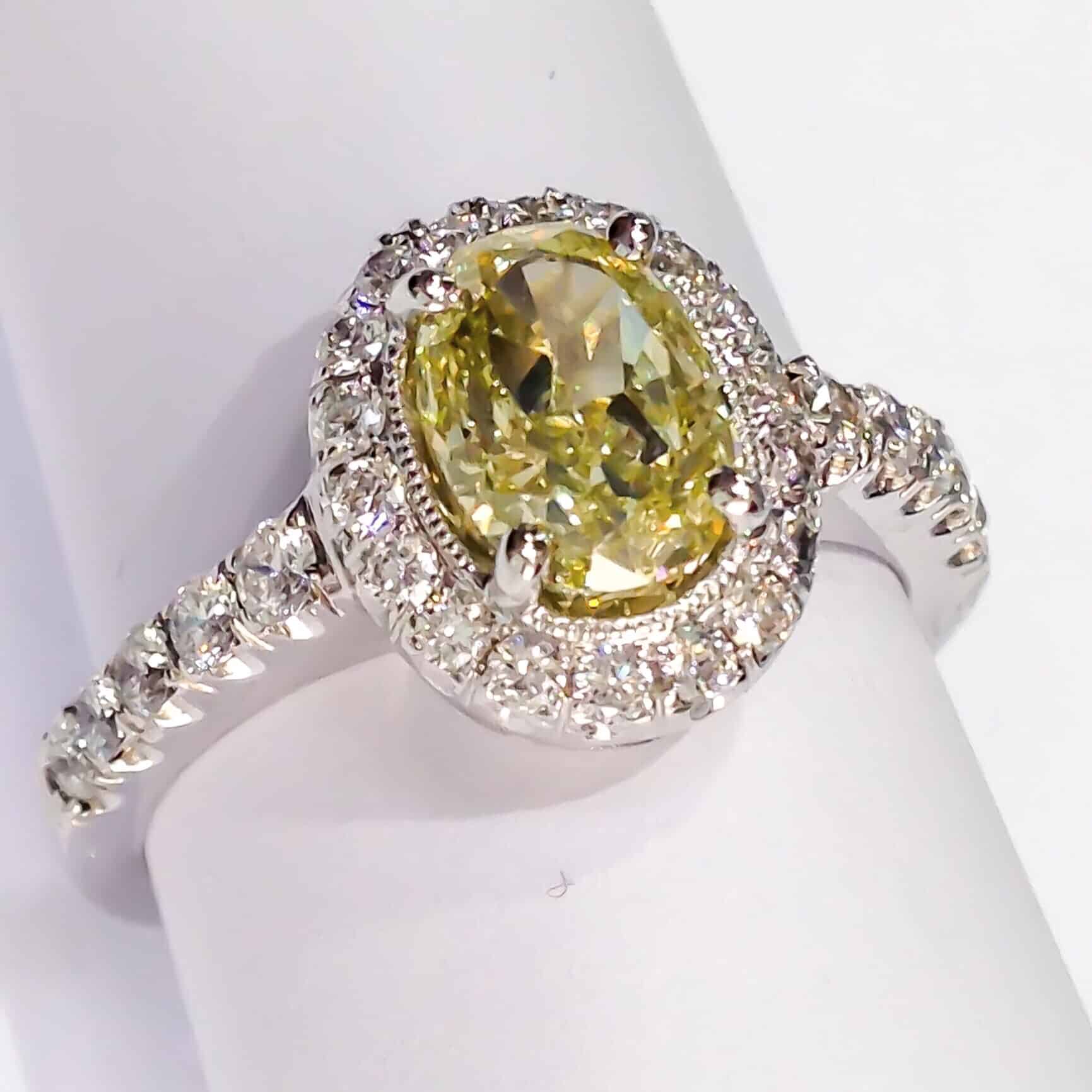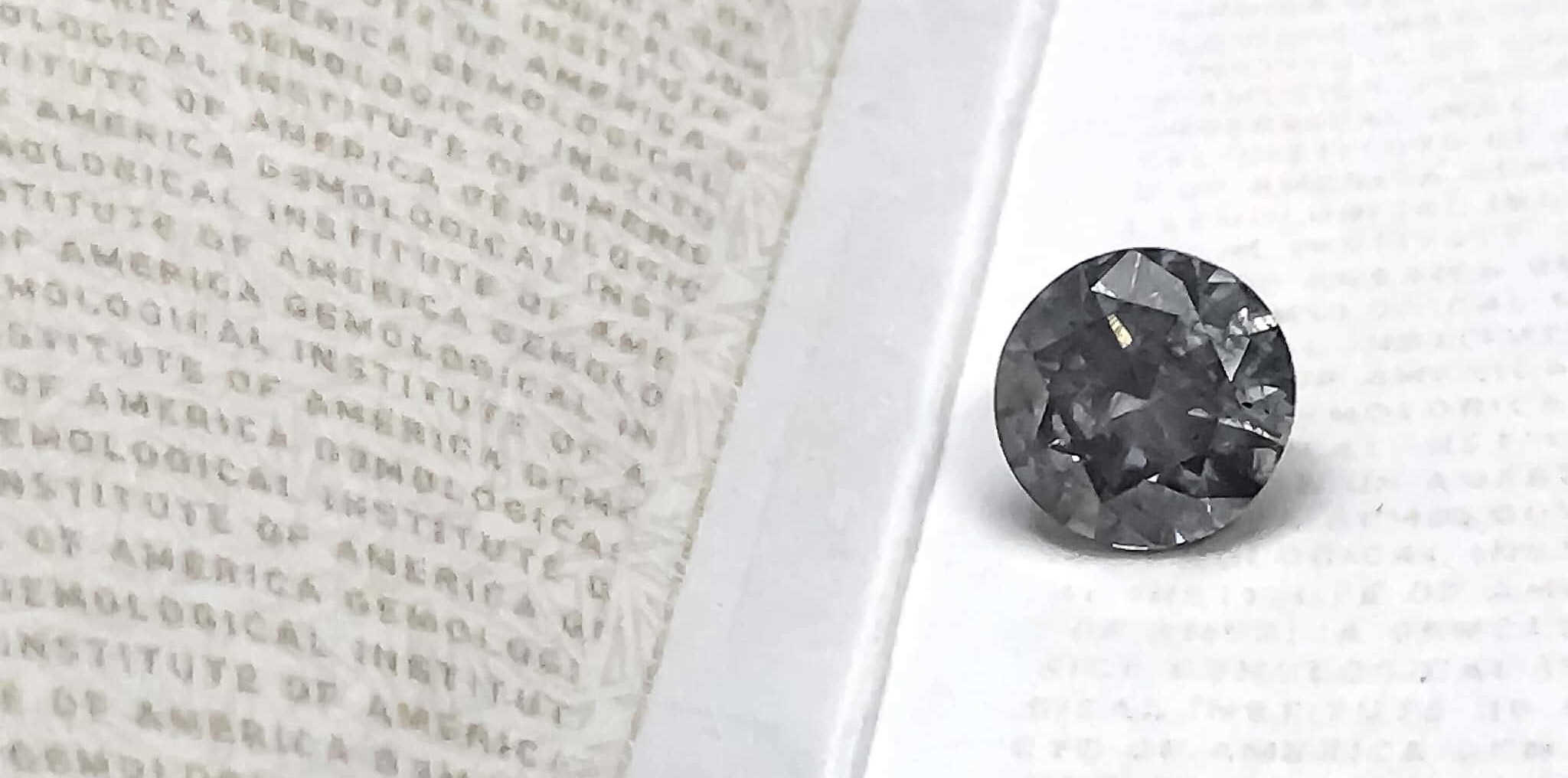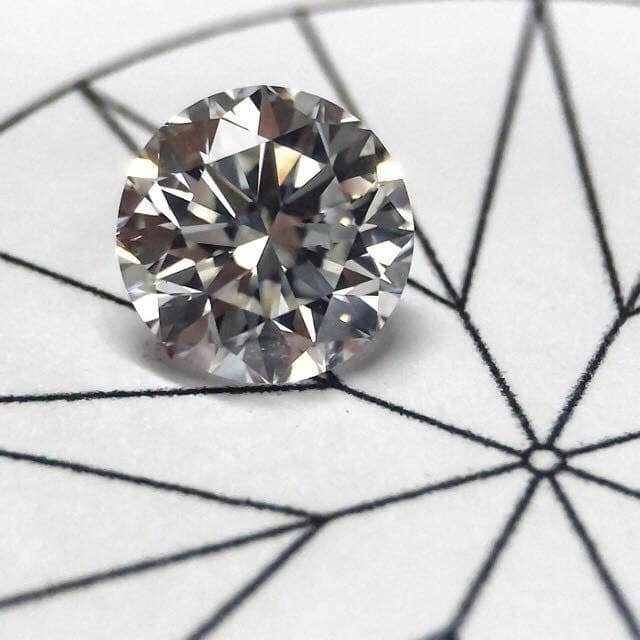
Thinking about buying a Diamond or Diamond Engagement Ring On line. Here are a few thing to consider…
In today’s consumer market you can purchase almost anything on-line but which items are safe to buy?
Pots and pans? Sure!
Used car? I’d probably want to test drive it, maybe have a mechanic take a look at it.
A diamond? Well, if all diamonds were the same then the answer would be easy. But they are not.
No two diamonds are the same.
Yes, there are internationally recognized Grading Reports such as GIA, AGS, and HRD, as well as many others that give you a description of a diamond and there is a standard grading system to assist in determining the general qualities of a diamond.
Most know of the 4c’s. Carat, Cut, Colour and Clarity. But did you know that there are dozens of factors within these 4c’s and hundreds of combinations that affect each unique diamond’s individual beauty and value?
Even seasoned Gemologist who has spent years studying Diamonds and reading the hundreds of pages in the GIA textbooks. Will tell you, he or she must see the diamond to assess its ultimate beauty.
The reality is a diamond’s quality, value and more importantly, its beauty cannot be garnered or appreciated from an online picture or a grading report alone.
Diamond e-tailers
This is evident when viewing the wide range of diamonds available from online diamond e-tailers. Often there are multiple diamonds that appear to have the exact same size and grades but have drastically different prices, sometimes up to double the price or more. They are usually listed by price with the lowest priced diamonds at the top of the list.
The majority of these online retailers do not own their diamonds. They actually never see the diamonds that they are selling. They basically blindly drop-ship stones from various vendors whose business model is geared towards impersonal service, mass distribution and volume sales.
Have you ever wondered why vendors would bother to sell the diamonds with the exact same grading specifications at different prices with the same and various e-tailers?
Or for that matter, why would someone buy the more expensive diamond if both diamonds were exactly the same?
The answer quite simply is that theyare not the same.
The Gemological Institute of America (GIA), the world’s most recognized laboratory even states:
“The convenience of online shopping can’t be beat if you’re researching your options and trying to narrow your choices. Be aware that diamonds that appear to be almost identical on a grading report − same colour, clarity or cut grades − may look different from each other when viewed in person. Ultimately, your decision is a personal one, so seeing the diamond with your own eyes is the best way to determine if it’s right for you.”
Selecting a diamond based on a Grading Report.
There are various discrepancies in almost all of the 4c’s listed in a diamonds grading report, with the exception of carat weight.
Carat weight is a finite number. A 1.00ct diamond weighs 1.00ct. There’s nothing subjective about that. However, this does not mean that two diamonds with the same weight and shape will be the same size. (We’ll discuss more about the cut of a diamond below.)
Colour. When comparing the colour of a diamond graded by the same laboratory such as GIA the discrepancy in colour for round diamonds is usually small to none. Specially in higher colour Diamond. However Fancy shape lower colour diamonds may have a wider discrepancy in colour due to where the colour is concentrated in the diamond and how the colour is dispersed.
Clarity. There are a wide variety of inclusion types, amount of inclusions, and placement of these inclusions that can vary greatly within a single grade.
When looking to purchase diamonds in the top range such as Flawless, Internally Flawless, VVS1 and VVS2, the characteristics on a diamond grading report are few and therefore there is less to consider. For the other clarity grades from VS1 to I1, there are many factors that inclusions can affect how diamond is seen both in laboratory conditions and the natural environment.
Many laboratories offer a plotting of a diamond’s inclusions indicating the rough placement and type of inclusions somewhat like a map. However, as a map will not show you what a beach or a mountain looks like, a diamond grading plot will not show you what a diamond actually looks like.
A few important factors that are not described in a diamond grading report are the colour, transparency and concentration an inclusion. Some inclusions might be light some may be dark, some translucent, some opaque. Some inclusions may reflect off another facet or multiple facets. Some inclusions may be placed at better angles and positions than others. In general, some inclusions on a grading report’s plot may be seen and some inclusions may not.
There are too many factors to list that cannot be garnered from looking at a diamond grading plot alone. Unless you are intending on purchasing a flawless or VVS diamond, the only way to see how inclusions affect the beauty of a diamond is to actually see it.
Cut. Similar challenges arise when selecting a diamond solely based on a diamond’s grading report cut grade. Often diamonds with the exact same size and cut grade can look drastically different. This is true with Round Diamonds but is more pronounced in fancy shape diamonds such as Pear Shapes, Princess cut, Oval, Emerald and Cushion cuts.
An excellent example of this is the cushion cut diamond. Two cushion cut diamonds can both be graded as excellent cut (excellent symmetry and excellent polish) and be totally different shapes. One may be elongated, another more square and there may be shapes in between the two.
There are various guidelines and factors which give a fancy shape diamond its brilliance and beauty as such, many laboratories such as GIA choose not to give a cut grade on fancy shape diamonds. The overall cut grade of a fancy shape diamond is subjective.
Ultimately choosing a diamond comes down to a personal preference and style to truly decide which diamond is best for you.
Remember — just because a diamond was graded by GIA it does not mean that it’s a “good” diamond. Conversely, just because a diamond is certified by another laboratory it does not necessarily mean that it is not a nice diamond.
What about pictures and videos?
Photos and videos are also used by many online vendors to get a rough view a diamond. Changing technologies have allowed for various ways an image diamond can be can be captured but these options also do not give an accurate perspective of a diamond’s individual characteristics and beauty.
There are several things to consider when judging a diamond based on pictures and videos
- There are many differing image capture options available. Different vendors use different systems, software, cameras and techniques.
- Depending on the technique used, images and videos are taken in different lighting conditions at and at varying distances and magnifications.
- Your screen or monitor — the reality is you are looking at a computer monitor or a screen on a smartphone. There are many out there. They all are different sizes, qualities, colours and temperatures and show that image differently. A basic example of this is that a small inclusion may seem large when viewing a diamond on a big screen such as a computer monitor. In contrast, a large inclusion may seem small when viewing a diamond on a small screen such as a phone or tablet.
- Many images and videos cannot actually capture the most important factors when selecting a diamond — its fire, brilliance and scintillation, the way the diamond actually sparkles, shines, dispersion light and colours, as well as its overall beauty. Pictures and videos can be a good tool to identify a diamond, much like a grading report and plot. But like grading report, in no way can they give you a fully accurate account of how a diamond will look in actuality.
So what’s the best way to actually see and know what you are buying?
So, back the initial question about buying a diamond online:
You’ve done your research, spent countless hours on the internet reading various blogs and sources, almost as if you were studying for your new career as a Gemologist, while stressing about making the right decision.
At this point you’ll probably realize what myself and many seasoned gemologists and fine jewellers will tell you. A grading report is a great tool for identifying a diamond but to really appreciate a diamond beauty it must be physically seen.
While buying some items online may be a convenient and sometimes cheaper option for some things, diamonds are not one of those items.
This is where your trusted jeweller comes into play. Your trusted jeweller will personally assess your wants, needs and budget. They will discuss with you which diamonds would be best suited for your particular piece. In addition to providing grading reports by GIA and other internationally recognized laboratories, they will they will provide you with their knowledge, expertise and ultimately select a diamond or diamonds to show to you in person.
We at Q Diamond Wholesale & Imports selects each and every diamond we carry for its maximum fire, brilliance and scintillation.
Contact Q Diamond Wholesale & Imports for a trusted jeweller in your area who will ensure your diamonds are selected with the finest details in mind.
Visit us again for future posts and more information on diamonds, diamond industry, news and trends.
www.qdiamond.ca
0 Comments
Leave a reply
You must be logged in to post a comment.



